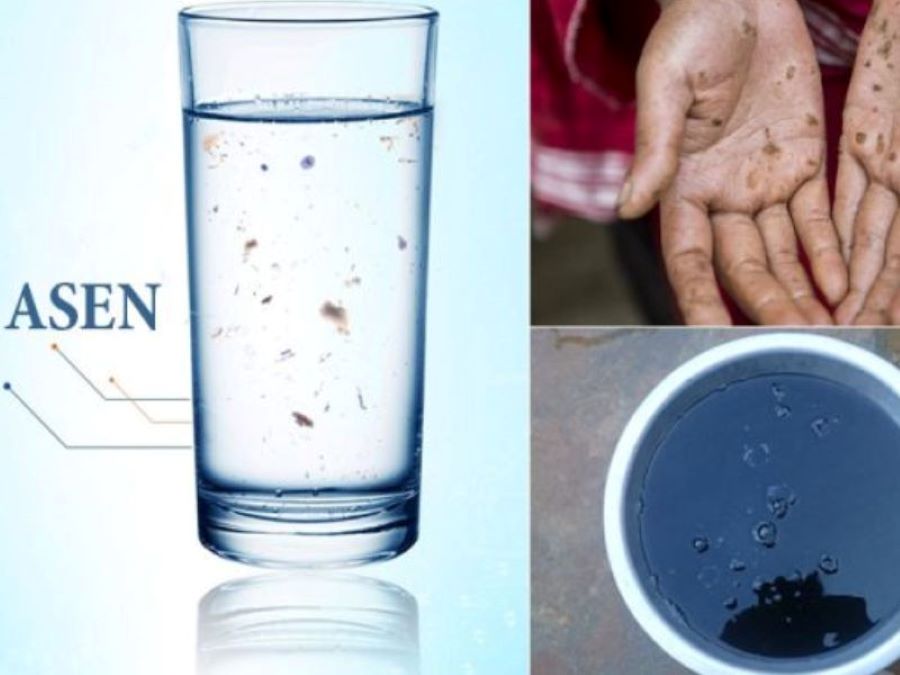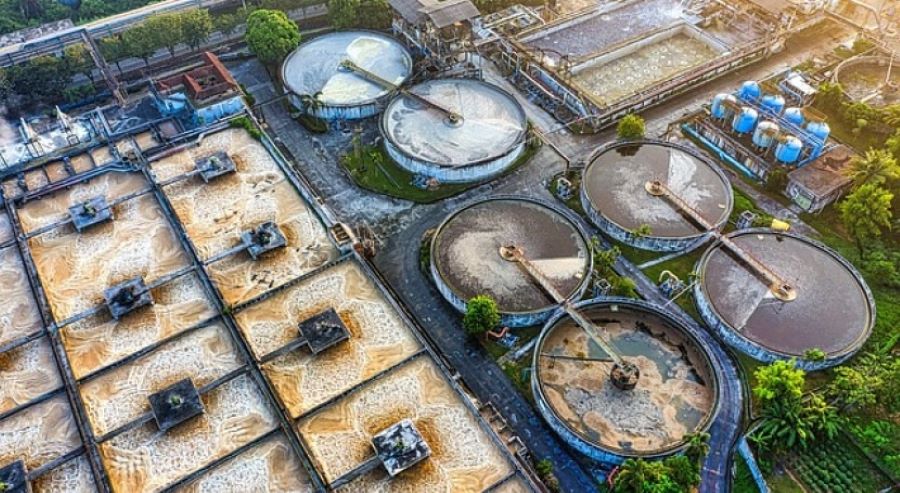In recent years, the issue of wastewater pollution has become increasingly serious, especially arsenic-contaminated wastewater. Arsenic is a highly toxic heavy metal, commonly found in nature and in many human production activities. When released into the water environment, arsenic directly affects ecosystems, soil, and groundwater sources. Therefore, studying the characteristics, sources of generation, as well as solutions for treating arsenic-contaminated wastewater is an urgent requirement to ensure sustainable development.
Arsenic-contaminated wastewater is wastewater that contains arsenic concentrations exceeding the permissible limits according to environmental standards. Arsenic can exist in many different chemical forms, with the most common being the inorganic forms As(III) and As(V). These are toxic forms, easily soluble in water, and difficult to remove by conventional treatment methods. Arsenic-containing wastewater often originates from various sources such as mining, metallurgy, industrial production, agricultural activities, or even domestic use when groundwater naturally contaminated with arsenic is used.
Arsenic in wastewater has highly toxic characteristics, is persistent in the environment, and easily bioaccumulates in organisms. At low concentrations but with long-term exposure, arsenic can cause serious effects on human health such as cancer, skin lesions, and damage to the cardiovascular and nervous systems. In addition, arsenic also pollutes soil and groundwater and degrades aquatic ecosystems. Therefore, identifying the source and chemical characteristics of arsenic and applying appropriate treatment technology is an urgent requirement to minimize risks to public health and protect the environment.

Learning about arsenic-contaminated water sources
This method uses chemicals such as iron salts, aluminum salts, or lime to create a precipitation reaction with arsenic in wastewater. The formed flocs drag arsenic down to the bottom, helping to separate it from the water environment. The advantage of this method is its low cost and easy application; however, a large amount of sludge is generated, which needs to be safely treated.
Adsorption is the process of using materials capable of capturing arsenic ions on their surface, such as activated carbon, zeolite, modified clay, or nano-metal oxides. This is an effective method to treat wastewater with low arsenic concentrations, and the adsorbent material can be regenerated after multiple cycles. The limitation is that the material cost is high, and efficiency depends on the pH and temperature of the wastewater.
In this method, ion exchange resins are used to replace arsenic ions in wastewater with safer ions (such as Cl⁻ or OH⁻). This method is highly effective, removing both As(III) and As(V), suitable for small-scale wastewater with high-quality requirements. However, the drawback is that resin cost and regeneration processes are quite expensive.
The filtration method often applies membrane technologies such as ultrafiltration (UF), nanofiltration (NF), or reverse osmosis (RO) to remove arsenic ions from wastewater. This technique provides high treatment efficiency, capable of almost completely removing arsenic and other impurities. The main disadvantages are high investment and operating costs, as well as the risk of membrane fouling.
The oxidation method uses strong oxidizing agents such as chlorine, ozone, permanganate, or hydrogen peroxide to convert As(III) (toxic, difficult to treat) into As(V) (easier to remove by coagulation or adsorption). This is often a pretreatment step before applying other technologies, helping to improve overall treatment efficiency. However, the dosage of chemicals must be carefully controlled to avoid generating toxic by-products.

Best arsenic wastewater treatment methods in 2025
Arsenic-contaminated wastewater is one of the dangerous pollutants, causing long-term impacts on the ecological environment. Although many treatment methods are currently available, choosing the appropriate technology needs to be based on the characteristics of the water source and actual conditions. Along with applying technology, it is important to seek reputable treatment units for consultation and implementation of optimal solutions.
Dai Nam Environment Company is a leading enterprise in the field of wastewater treatment in Vietnam, with many years of experience in projects ranging from household to industrial scale. Dai Nam owns a team of highly qualified engineers, modern equipment, and advanced treatment technology, ensuring the removal of arsenic and other heavy metals in compliance with the standards set by the Ministry of Natural Resources and Environment.